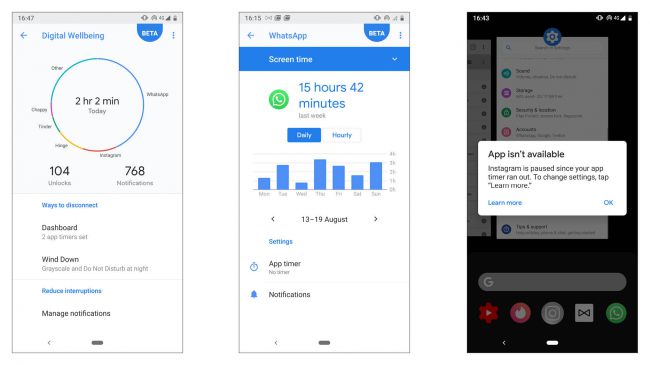And a healthy dose of Android 9
As the big names in tech are beginning to acknowledge the impact their products have had on our mental wellbeing, we’re starting to see the likes of Google and Apple release tools that directly address these problems.
In an Android blog post titled “The search for JOMO”, Google revealed the results of a recently-published long-term study on “excessive smartphone use and healthy disconnection”.
The researchers found that, regardless of age, culture or gender, “mobile devices loaded with social media, email and news apps, were creating a constant sense of obligation, generating unintended personal stress.”
The results showed that this stress was both a result of the addictive nature of the devices and the apps they carry, as well as the external and social obligation of being perpetually contactable and expected to respond.
While planned disconnections from devices were beneficial to mitigating this stress, the study found that when this occurred outside of a user’s control (such as a depleted battery), they felt further stress due to FOMO (Fear Of Missing Out).
Google's Digital Wellbeing dashboard aims to reduce unnecessary phone use
Remedial approaches
Ultimately, Google boiled its research down to find three approaches to replacing FOMO with JOMO (Joy Of Missing Out), and these were to facilitate disconnection, reduce the temptation to re-engage, and allow for partial disconnection.
The second involves adding an extra step the user must take in order to open problem apps – the idea being that even a small inconvenience could dissuade the user from involuntarily immersing in distraction, thus providing time to reflect on their intention.
Finally, the idea of partial disconnection recognizes that phones still have immense utility in contemporary society and that it’s impractical to abandon them entirely. As such, the essential features and functions should be readily accessible while distracting and addictive apps should be limited and restricted.
The breakers and fixers
Conveniently, Google points out that several of its existing and upcoming features help tick these boxes – Android 9’s Digital Wellbeing dashboard, YouTube’s Time Watched profile, and parental controls such as Family Link all neatly fit these solutions.
While it does seem suspect that a creator of one of the problematic systems is now offering up solutions that happen to exist within the same system, the fact that giants like Google and Apple (with its Digital Wellbeing equivalent – Screen Time) are beginning to acknowledge, address, and take responsibility for the issue is encouraging.
“We have a responsibility to […] give people a way to reclaim their time and not feel tied to their devices,” Google states. “Technology should improve your life, instead of distracting from it. There’s a lot more work to be done, but the first step toward bringing JOMO into people’s lives is to start listening.”
As Google promises “much more” in the way of addressing the issues of excessive smartphone use, we can only wait and see how authentic their plight truly is.







I am often to blogging and i really appreciate your content. The article has really peaks my interest. I am going to bookmark your site and keep checking for new information.
ReplyDeleteBehance.net
Website
Information